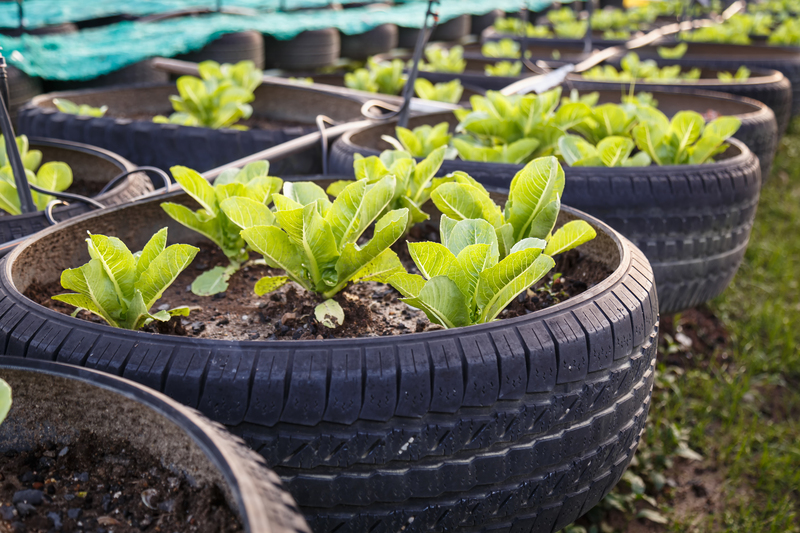Protecting Your Health and the Planet With Proper PPE Waste Disposal
As the world continues to rely on Personal Protective Equipment (PPE) like masks, gloves, and gowns to safeguard against infectious diseases, a new environmental issue has emerged: PPE waste management. While PPE is vital for protecting our health, improper disposal practices are threatening our ecosystems, spreading microplastics, and endangering wildlife. This comprehensive guide explores safe, eco-friendly PPE waste disposal methods that protect both human health and our planet.

Understanding the Impact of PPE Waste
What Is PPE Waste?
PPE waste refers to items such as single-use masks, gloves, face shields, and protective gowns discarded after use for health and safety reasons. As the demand for these items skyrocketed during global health crises, so did the volume of waste.
Why Proper PPE Disposal Is Critical
- Health Protection: Improperly disposed PPE can harbor infectious agents, spreading diseases.
- Environmental Safety: Most PPE is made from non-biodegradable plastics, contributing to land, water, and marine pollution.
- Wildlife Threat: Animals may ingest or become entangled in discarded PPE, which can result in injury or death.
- Microplastics: The breakdown of PPE in the environment releases microplastics, contaminating water sources and entering the food chain.
The Lifespan of PPE in the Environment
Many PPE products like masks and gloves are made from synthetic polymers like polypropylene, which can persist in the environment for hundreds of years. Without proper PPE waste disposal, these materials build up in landfills and ecosystems, compounding the planet's plastic pollution crisis.
Best Practices for PPE Waste Disposal
1. Separate PPE Waste From Regular Trash
Always dispose of used PPE in dedicated waste bins to prevent contamination and facilitate proper processing. This helps waste handlers identify and manage potentially hazardous items safely.
2. Follow Local PPE Disposal Guidelines
Different countries and municipalities have their own protocols for safe PPE waste management. Check for special collection points, hazardous waste instructions, or designated bins at public transport stations, stores, and medical facilities.
3. Household PPE Disposal Tips
- Bag it properly: Place used PPE in a plastic bag, tie it securely, and dispose of it in a closed household bin.
- Do not recycle: Used masks, gloves, and gowns should not go into recycling bins, as they can contaminate recyclables and put waste workers at risk.
- Wash your hands thoroughly after handling discarded PPE, even at home.
4. Public Spaces and Workplace PPE Disposal
Employers and facility managers should place marked PPE disposal bins in accessible areas, provide training on proper disposal, and regularly empty and sanitize these receptacles to avoid overflow and contamination.
5. Healthcare Facility PPE Waste Management
Medical facilities generate significant PPE waste, which must be strictly managed as infectious or clinical waste. Protocols include:
- Using color-coded biohazard waste bags.
- Securing waste in sealed containers.
- Following incineration or advanced sterilization processes to neutralize pathogens.
Eco-Friendly Alternatives and Reducing PPE Waste
Reusable PPE Options
While single-use items dominate the market, reusable PPE alternatives such as washable cloth masks, face shields, and durable gloves can mitigate landfill waste. Choose high-quality reusable PPE and follow cleaning instructions meticulously to ensure safety.
Innovative Biodegradable PPE
Emerging technologies are producing biodegradable masks and gloves from plant-based materials, offering a solution that decomposes naturally without leaving harmful residues. Look for certifications and buy from reputable manufacturers.
Educating the Public
Awareness is key. Promote responsible PPE waste disposal through community campaigns, workplace posters, and educational outreach, ensuring that everyone understands the health and environmental risks of improper disposal.
PPE Waste and the Circular Economy
Can PPE Be Recycled?
Standard curbside recycling does not accept used PPE due to contamination risks. However, specialty recycling programs are emerging for clean, single-use masks and gloves. Some companies have created dedicated PPE recycling boxes for offices, schools, and hospitals, transforming used PPE into plastic pellets for manufacturing benches, decking, or even new products.
- Check for mail-back PPE recycling programs in your area.
- Never place contaminated PPE in home recycling bins.
Upcycling and Repurposing Initiatives
Creative solutions are appearing worldwide, such as using cleaned PPE for road construction materials or conceptual art projects to raise awareness about the scale of waste. While these projects are not a universal solution, they help highlight the importance of rethinking our waste streams.
Health Risks of Improper PPE Waste Disposal
Spread of Infectious Agents
When disposable masks or gloves are thrown carelessly on the street, in parks, or public transport, they may carry viruses or bacteria, putting essential workers and the public at risk.
Blocked Drains and Urban Pollution
Discarded PPE clogs stormwater systems, leading to flooding and spreading urban pollutants. In coastal regions, improper disposal leads to marine litter and hydraulic blockages, severely impacting water quality and navigation.
Protecting Sanitation Workers
- Proper PPE waste disposal reduces occupational exposure to pathogens for janitors, waste sorters, and landfill workers.
- Clear labeling and segregation of PPE waste minimizes accidental contact and health risks.
Key Tips for Safe and Sustainable PPE Waste Disposal
- Always use a sealed bag for used PPE - never flush PPE down toilets or throw in open spaces.
- Do not touch the front of your mask or dirty side of gloves while discarding; remove by ear loops or cuffs.
- Teach children and elderly family members how to dispose of PPE safely.
- If possible, participate in local PPE recycling initiatives or community clean-up events.
- Advocate for better infrastructure in your community, such as waste bins with lids and informative signage.
Government and Corporate Responsibilities in PPE Waste Management
Legislation and Policy
Governments play a significant role in regulating PPE waste by implementing clear guidelines, supporting waste management infrastructure, incentivizing recycling, and funding research on sustainable alternatives.
Corporate Social Responsibility
Employers, event organizers, and major consumers of PPE have a duty to provide safe disposal options for staff and visitors, implement training, and support or sponsor recycling initiatives.
Case Studies: Global Approaches to PPE Waste Disposal
1. Singapore's Closed-Loop PPE Disposal
Singapore's National Environmental Agency provides clear instructions and numerous PPE disposal points throughout the city, pairing high-efficiency incineration with education campaigns to minimize environmental impact.
2. The UK's PPE Recycling Trials
Some hospitals and local governments in the UK partner with environmental companies to recycle PPE into construction materials, backing the efforts with robust guidelines and staff training.
3. Community-Based Solutions
Grassroots organizations around the world organize beach and neighborhood PPE clean-ups, focusing on public education and advocating for biodegradable alternatives.

The Future of PPE Waste Management
Technological Innovations
Emerging techniques including pyrolysis, advanced sterilization and sorting robotics, and biodegradable material development are reshaping how we handle PPE waste. These innovations support a healthier, more sustainable future for both humans and nature.
Consumer Choices Matter
Each person's decision to dispose of PPE correctly, choose reusable or biodegradable products, and participate in recycling initiatives creates a ripple effect, reducing pollution and setting new social norms.
Conclusion: Be a Steward of Health and the Environment
Without proper PPE waste disposal, the very items meant to protect us can endanger our well-being and worsen the planet's pollution crisis. By adopting responsible PPE waste practices, supporting sustainable innovations, and demanding better policies, everyone plays a crucial role in protecting both health and the environment. Let's make every discarded mask, glove, and gown a thoughtful act of stewardship--for ourselves, our communities, and generations to come.
Summary: Key Steps to Sustainable PPE Waste Management
- Separate and seal used PPE before disposal
- Follow local disposal and recycling guidelines
- Use reusable and biodegradable PPE wherever possible
- Promote awareness and educate others about PPE waste risks
- Advocate for stronger policies and improved infrastructure
For more tips on protecting your health and the planet through responsible PPE waste management, stay updated with your local regulations and join community efforts to keep our environment clean and safe.